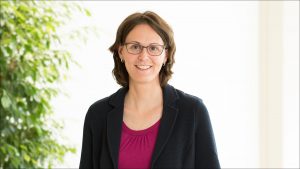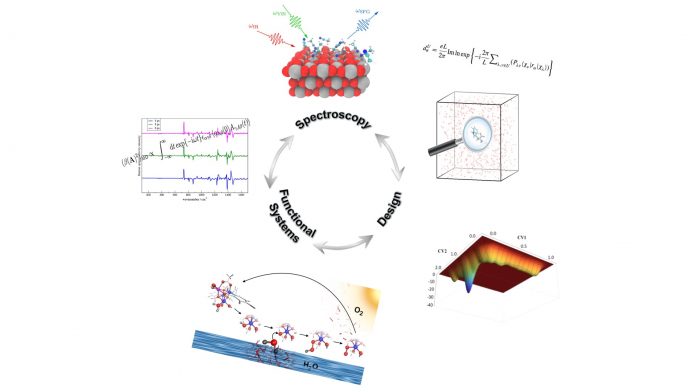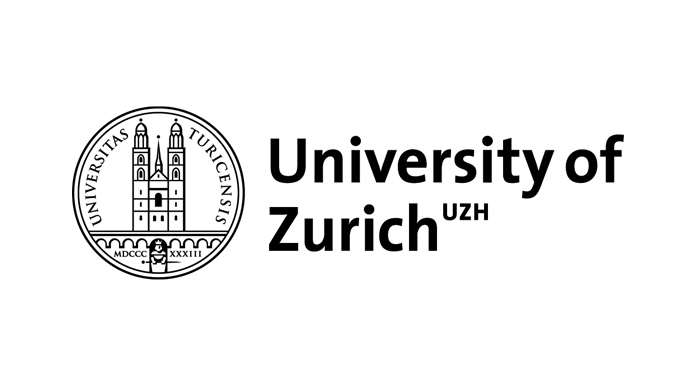The Luber Group at the University of Zurich, Switzerland, works on the development of forefront computational methods at the interface of chemistry, biology, physics and materials science.
Highly accurate approaches derived from quantum mechanics have been the focus of their research, as have applications of their methods which include a broad range of systems – from (bio-)molecules over functional co-ordination compounds, to condensed phase systems.
In-depth study and informed in silico design are carried out to obtain systems with desired properties and functionalities. Examples include complex processes such as solar light-driven catalysis for sustainable hydrogen production as a promising solution to the world’s energy problem.
Research areas include:
-
- The investigation of chiral systems;
- Purpose-driven spectroscopy;
- Vibrational spectroscopy for condensed phase systems and interfaces;
- The analysis of functional compounds; and
- Catalysis and design.

Professor Dr Sandra Luber has been honoured with a number of awards. In 2017 she received the Clara Immerwahr Award as first theoretician; she became the first female scientist to obtain the Hans GA Hellmann Award; and was also the first female recipient of the Robin Hochstrasser Young Investigator Award. In 2018 Professor Luber also won the prestigious Werner Prize of the Swiss Chemical Society. Other awards include the IBM Research Prize for Computer Modelling and Simulations in Chemistry, Biology, and Materials Science, an SNSF professorship, and the ETH medal for an outstanding PhD thesis.
Theoretical and computational chemistry, biophysics, and materials science
Investigation of chiral systems
Chirality plays an important role in many aspects of chemistry, biology, and physics. Vibrational Raman optical activity spectroscopy enables valuable information on the structure and dynamics of systems and has been widely used to study molecules in solution. Based on a newly developed approach, it became possible to present the first spectra for chiral metal complexes and a large metalloprotein, thus opening up an exciting field of research for co-ordination compounds and theoretical exploration of complex (bio-)molecules. The special case of Resonance Raman optical activity has also been further developed, which can provide important additional information due to resonance with electronically excited state(s).
Purpose-driven spectroscopy
Focusing on only a part of special interest in vibrational spectra is a promising way of reducing the computational effort for the calculation of such spectra. One such approach is the so-called ‘Intensity-Tracking’, which can be used to selectively converge high-intensity bands in vibrational spectra, using the concept of intensity-carrying modes. Other directions have dealt with relativistic quantum chemistry, real-time propagation for excited states and on- and off-resonance spectra or subsystem density functional theory for the calculation of local properties and computational speed-up.
Vibrational spectroscopy for condensed phase systems and interfaces
In recent years, the Luber Group has especially been interested in the modelling of vibrational spectra for condensed phase systems. Alongside studies for the inclusion of solvent effects in static calculations, it has also focused on high-performance ab initio molecular dynamics as a tool for describing condensed phase systems and their dynamics accurately at ambient conditions. Apart from the use of density functional theory embedding, Prof. Luber’s group has, for instance, presented efficient computational approaches for Raman (optical activity) and sum frequency generation. Functional solvated molecules and ionic liquids have been studied together with experimental groups.
Analysis of functional compounds
Having been involved in the study of various compounds ranging from (bio-)molecules over liquids to molecules on surfaces, recent group projects in collaboration with other groups have also, for example, concerned the investigation of electronic communication in dirhenium complexes, photoinduced proton-coupled electron transfer, and the development of refinement procedures for improved agreement of computational models and experimental data using e.g. X-ray absorption and Moessbauer spectroscopy.
Catalysis and design
Recent research has concentrated on solar light-driven water splitting both in nature’s photosystem II and in artificial systems. The latter is a promising way for hydrogen production, which is desirable for sustainable energy storage and conversion. Since water oxidation is a main bottleneck for the development of high-performance artificial water splitting devices, the group has especially focused on bio-inspired approaches for the development of high-performance water oxidation catalysts mimicking nature’s photosystem II. Current efforts deal with development of computational methods for detailed investigation and intelligent design of novel efficient catalysts.
The group is part of the university priority program “Solar Light to Chemical Energy Conversion” (LightChEC) at University of Zurich. Further information can be found here: https://www.lightchec.uzh.ch/en/research/Computationalstudywater-splitting.html
Prof. Luber has written for numerous peer-reveiwed publications, including:
-
- ACS Catalysis;
- The Journal of Physical Chemistry Letters;
- Biochemistry
- ChemSusChem;
- The Journal of the American Chemical Society;
- Angewandte Chemie; and
- The Journal of Chemical Physics.








